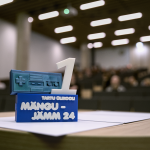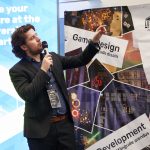In Delta we manage several physical exhibitions for our students and visitors.
 VR Headsets and Graphics Cards
VR Headsets and Graphics Cards 2006 Computer Class Poster Wall
2006 Computer Class Poster Wall Student Projects Hallway Poster Wall
Student Projects Hallway Poster Wall Physically-Based Shading Materials
Physically-Based Shading Materials

 VR Headsets and Graphics Cards
VR Headsets and Graphics Cards
In the hallway near our lab we have created a display of different VR headsets and graphics cards. The headsets are taken apart to show the chips, sensors, LEDs, optics, displays, and everything else that is actually inside a VR headset. Every headset has information describing why that headset was important in the development of contemporary commercially available virtual reality.
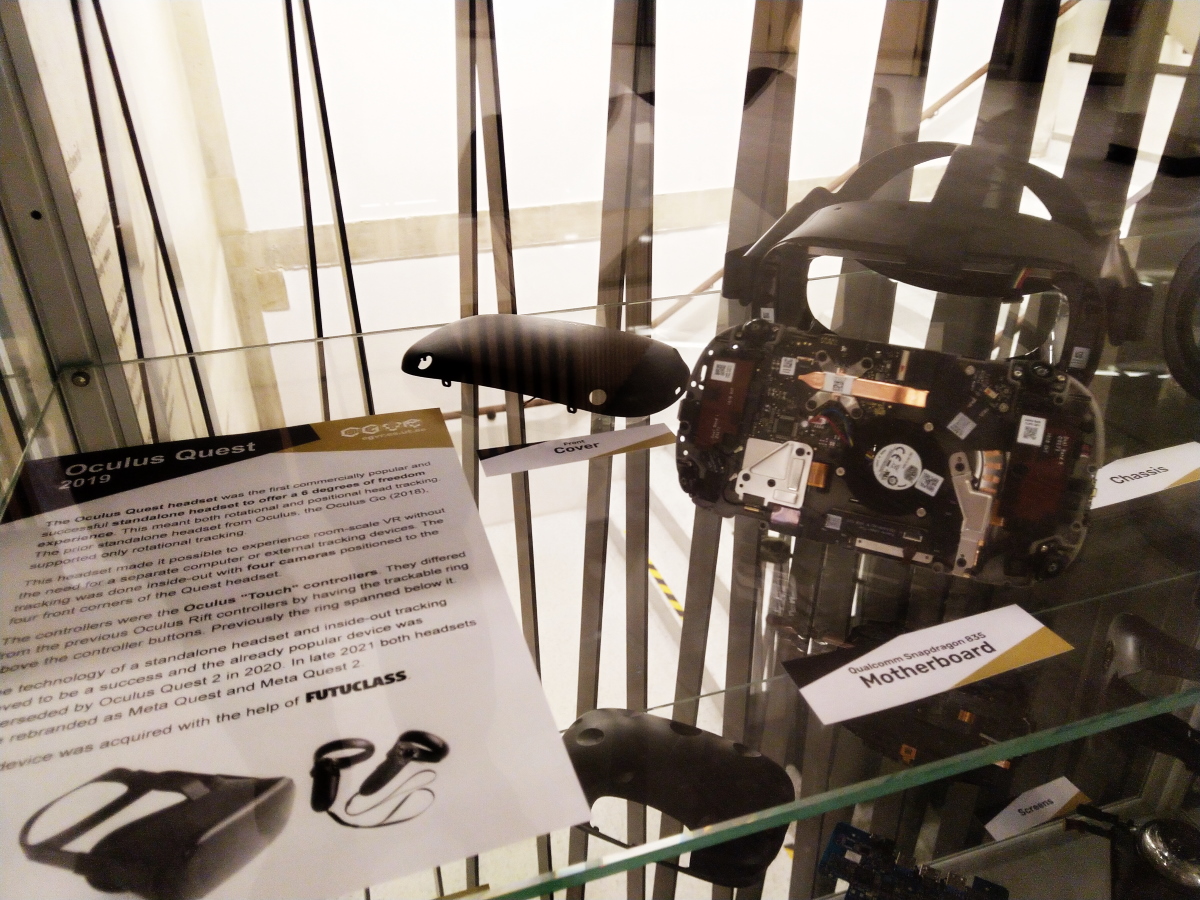 |
 |
Next there are several graphics cards organized in a timeline. This makes in visually evident how this very important piece of computer hardware developed from the 90s to modern times. We have added small labels for interesting parts on the cards. The info pages describe the purpose and different aspects in the evolution of a graphics card.
 |
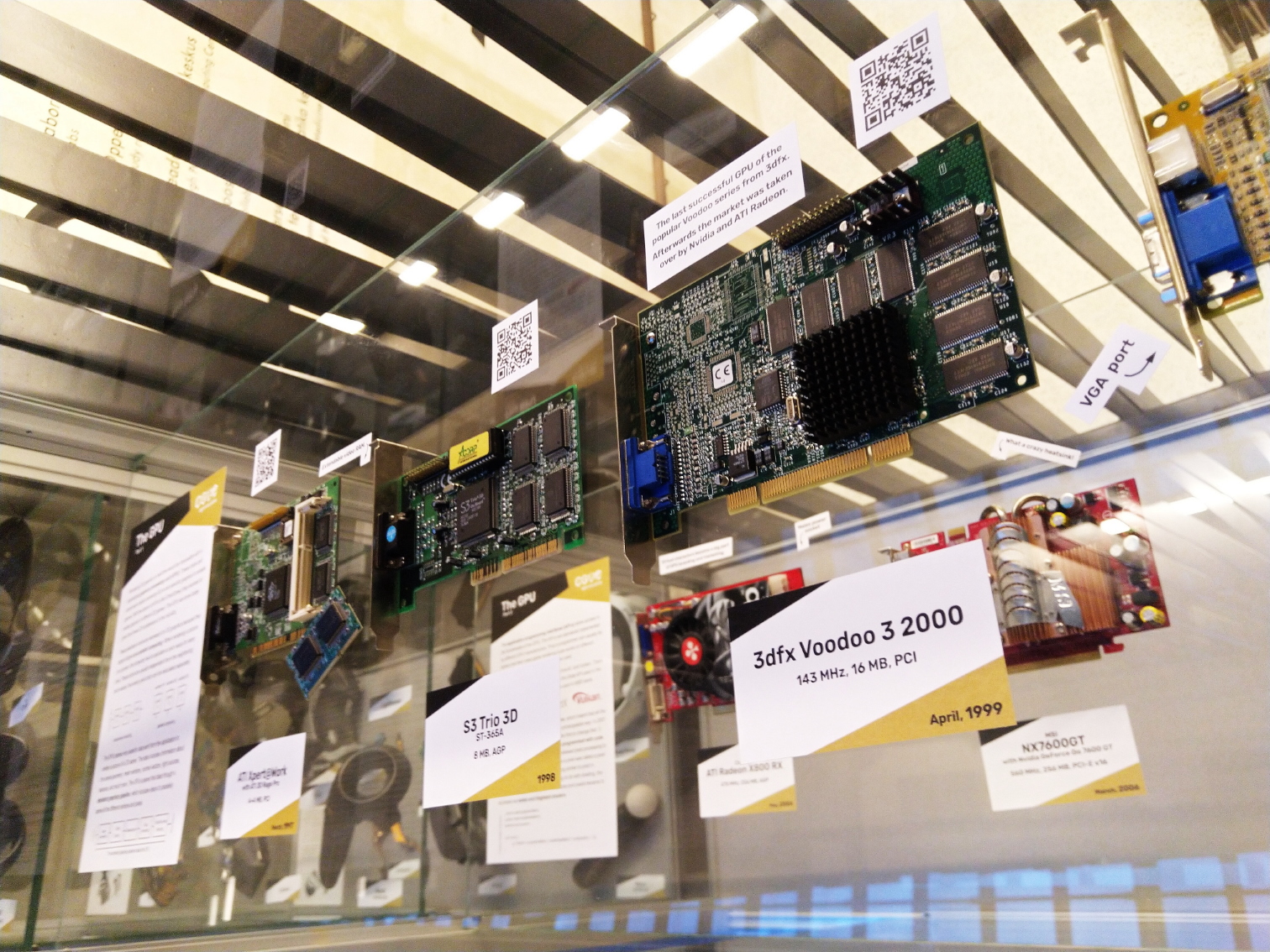 |
 2006 Computer Class Poster Wall
2006 Computer Class Poster Wall
In the 2006 computer classroom we teach computer graphics, video games, and virtual reality development as well as organize game jams. Thus it was important that the classroom’s interior is inspiring to our students and game jam visitors. For that we have made a poster wall showing projects from game jam winners and excellent students.
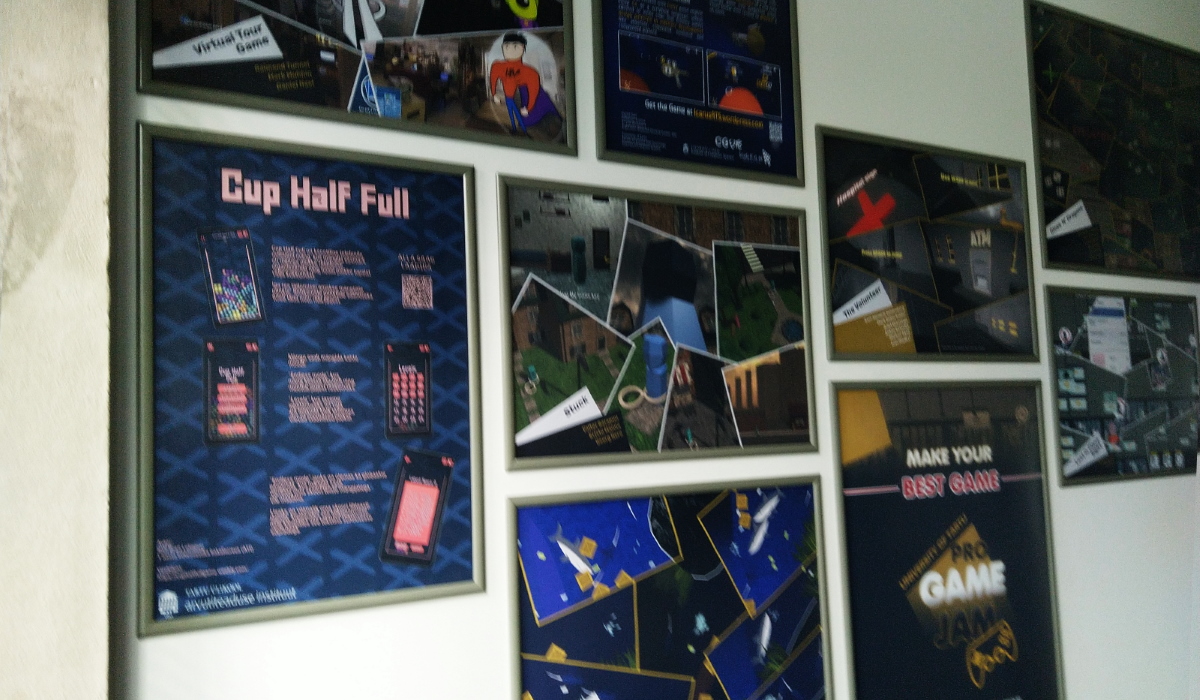 |
 |
 Student Projects Hallway Poster Wall
Student Projects Hallway Poster Wall
In the hallway opposite of our lab, we have set up posters from the outstanding thesis projects our students have made. Every year students participate in our institute’s student project contest and make posters of their works for it. We showcase these student-designed posters from our lab’s students throughout the academic year in the hallway.
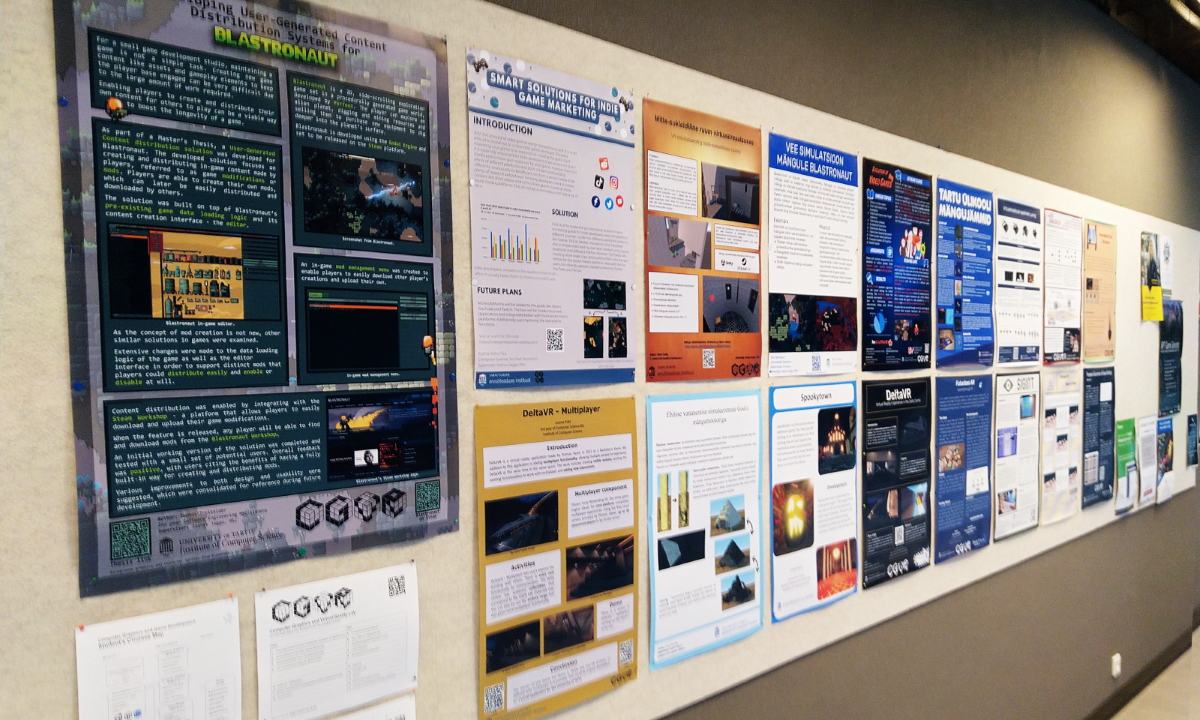 |
 |
 Physical Materials
Physical Materials
In our lab’s main room 2007 we have made real-world physical examples of differently colored plastics and metals with different roughness. In game and rendering engines with a physically-based shading workflow, developers have to configure materials to be metal or non-metal and set the surface roughness to get a desired look. We feel having access to actual physical examples of some common materials that illustrate that point, is a very valuable learning tool.
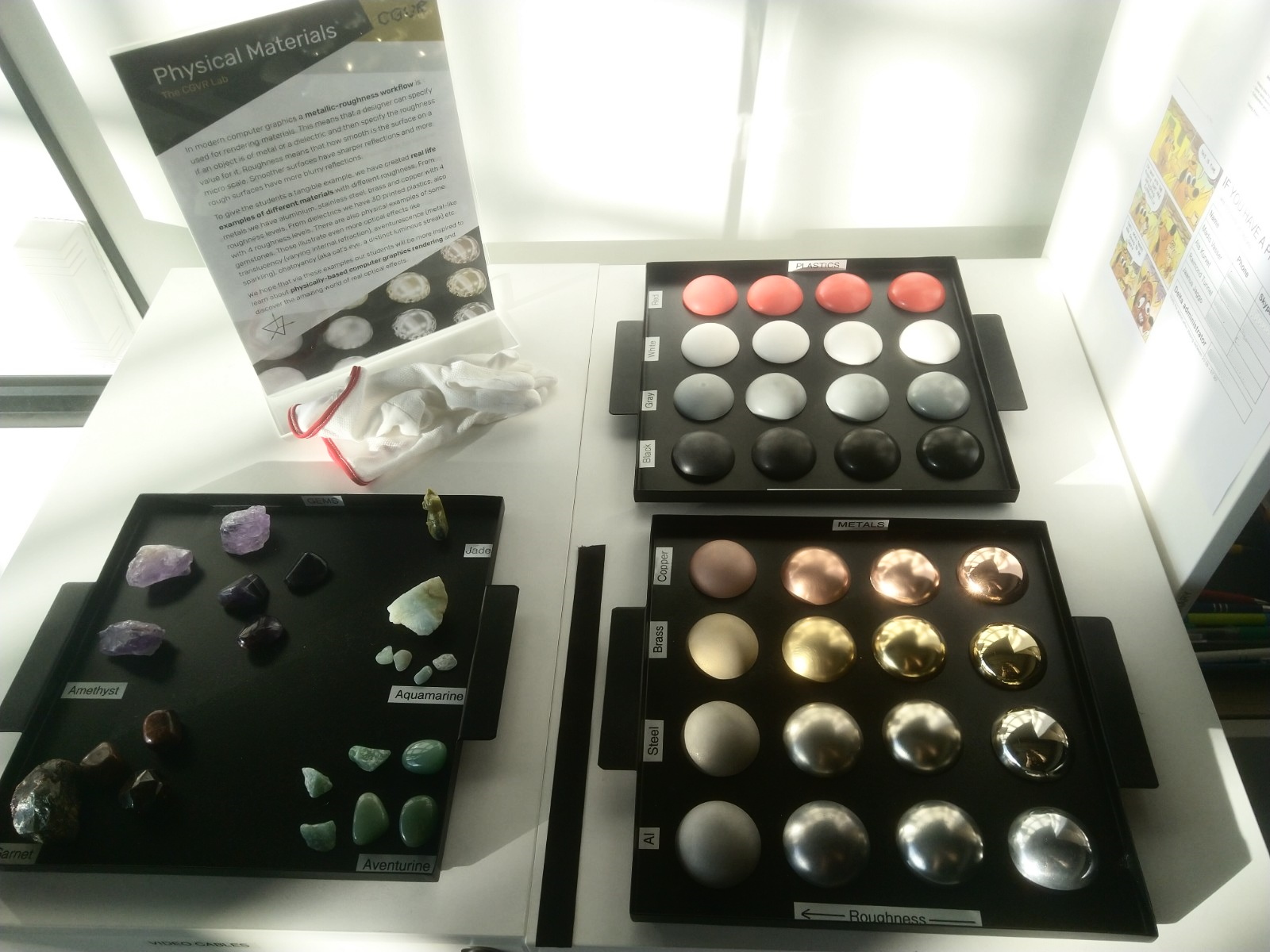 |
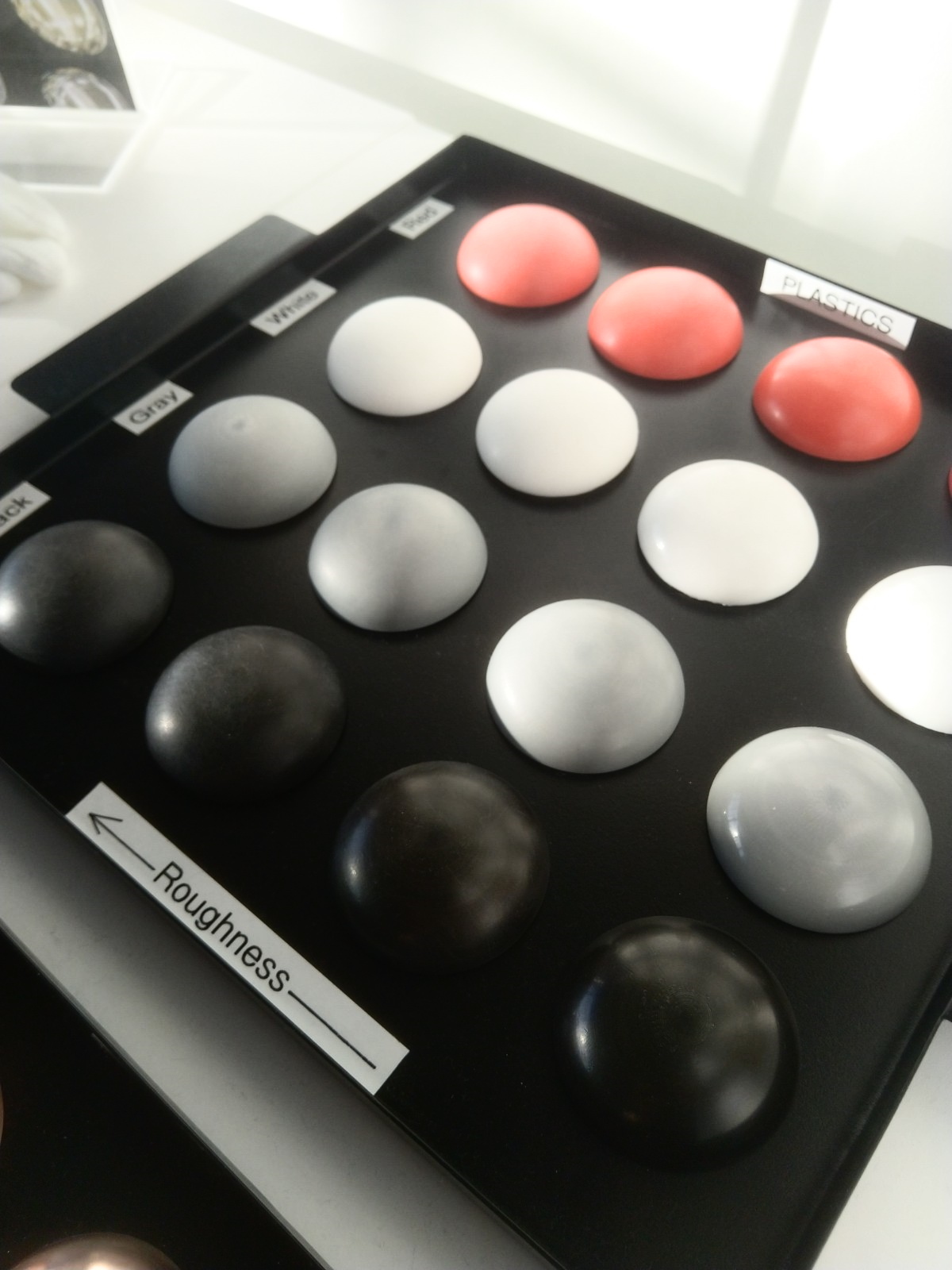 |

